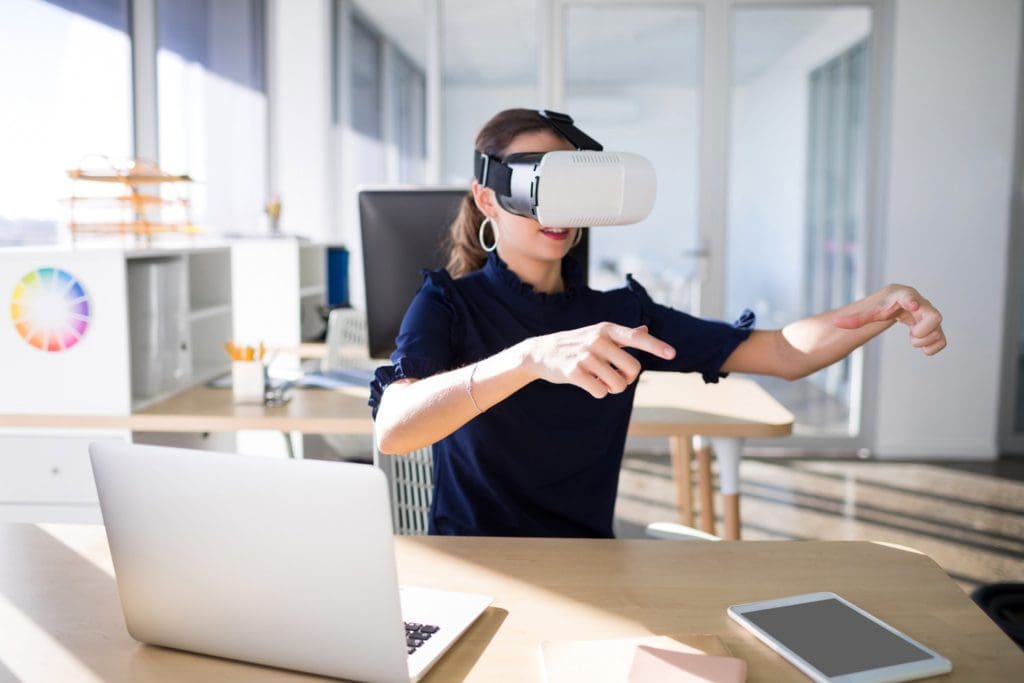Despite unclear adoption rates, evangelists and technologists alike have continued to charge forth, with fervent belief that virtual reality (or “VR”) has the potential to change our day-to-day lives, especially when it comes to what we consume from brands.
In fact, big-hitting agencies such as Ketchum are giving serious thought to how VR plays into PR strategies because they know that it allows communications and creative professionals to create more meaningful interactions and engaging experiences with their users or customers. And this is just the beginning as more brands such as Survios develop immersive VR technologies.
Here, I explore three ways to amplify public relations with virtual reality, and why “VR in PR” is poised to become the most forward-thinking communications method in the not-so-distant future.
Virtual reality is an enormous opportunity for storytelling
VR is essentially an experience predicated on wearing a miniaturized HDTV on your face. Should you decide to incorporate virtual reality content into your public relations, communications, or brand marketing strategy, you would reap the benefits of this totally immersive, distraction-free experience. That means the user will be hyper-focused on your message and the experience you create for them.
Brands such as Volvo and The Coca-Cola Company are already using VR as a medium for telling their stories in an immersive, impactful, and memorable way. You can test drive a car with Volvo or ride in Santa’s sleigh with Coca-Cola.
How valuable would it be for you to have 3+ minutes of undivided attention from your target audience?
The demand for virtual reality is completely bonkers
It’s been predicted that a whopping 15 million virtual reality headsets will sell in 2016, raking in a projected $1B in revenue. Growth in VR and subsequent hype is outpacing sectors that are either stagnant or shrinking. It doesn’t take a rocket scientist to see that soon there will be a swath of VR users hungry for new content to consume (and hopefully they’re eating up yours).
At the most recent Electronic Entertainment Expo in Los Angeles, VR fans were reportedly waiting in lines for up to two hours in the Southern California heat. Can you imagine waiting in Disneyland-length lines just to try out a VR experience?
Given how content consumption is evolving in this direction (and the fandom associated with this new technology), investing in creating VR content now could increase your potential for favorable media exposure. Social media equivalent: the first few brands who succeeded on Snapchat.
Enhanced analytics and attribution
Lastly, there will soon be a goldmine of virtual reality data informing business decisions. An integral part of VR technology is tracking everything from movement to interaction — some headsets are even beginning to pick up on your eye movement.
Let’s say you’ve created a test-drive experience in VR for a new hybrid vehicle and wonder if users will spend more time looking at the details of the faux-leather steering wheel or sleekly designed radio faceplate. With VR’s tracking capabilities, you’d be able to understand this, no problem.
There are already several companies such as CognitiveVR working to digest all sorts of VR data. The logical next step is to provide insight and measurement around the data collected. As the VR industry matures and revenue streams materialize, VR creators will find it crucial to optimize their content for users.
Similarly, communications professionals will need to understand the brand impact of VR and how to optimize messaging within those experiences. This is just the tip of the iceberg when it comes to the potential of VR user data.
Where to start
I know what you’re thinking. How do I even go about suggesting this to my teammates or proposing a costly effort like this to my CEO when we have so many other important priorities? We get it. But even if you don’t have the means to pursue VR right now, you can still get your feet wet and start to introduce this technology to your team so that you’re not at the tailend of adoption.
Buy a Google Cardboard viewer for a mere $15 so you can take advantage of the VR device that’s already in your pocket. Your phone slips right into the viewer, turning it into a virtual reality device in seconds, and there is a slew of affordable and free VR apps you can download.
Once it’s loaded up with some apps, issue a company-wide or department-wide challenge, encouraging your designers, content creators, and communications professionals to brainstorm three new ways virtual reality could be used to enhance your brand experience. Even if you don’t end up pursuing them, it will be an excellent exercise in innovation and will perhaps inspire more forward-looking marketing campaigns.
In the end, the hype around virtual reality will eventually stabilize, but the initial value proposition remains the same: VR is a vastly effective method for engaging your audience and telling your story. You’ll feel a lot more excited about it if you don’t wait until next year or the year after to jump aboard.

